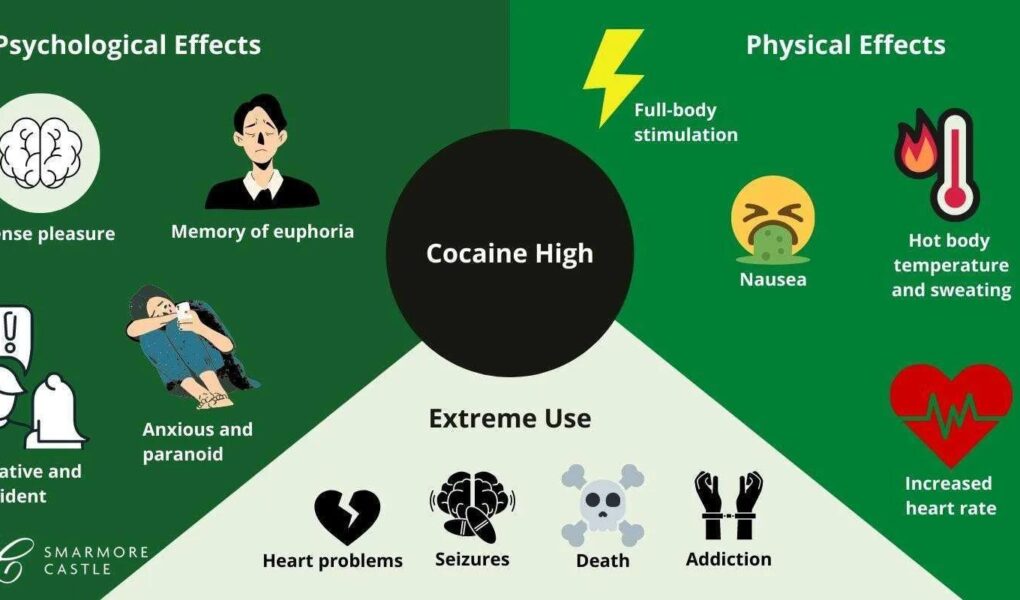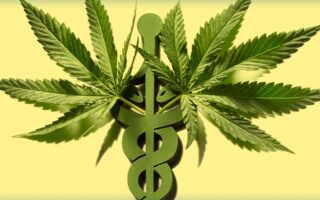Unraveling the High: A Deep Dive into the Effects of Cocaine
Cocaine has long been entwined with images of glamour and excess, as well as tales of peril and addiction. This powerful stimulant, derived from the coca plant, evokes a complex tapestry of experiences—ranging from moments of euphoric elation to profound despair. As societal perceptions of drug use evolve, understanding the multifaceted effects of cocaine becomes increasingly critical. This article delves into the physiological and psychological impacts of cocaine, shedding light on how it alters the body and mind, and examining the fine line between exhilaration and harm. Join us on this journey as we unravel the intricate effects of one of the world’s most infamous substances, illuminating the stark realities that lie beneath the surface of its alluring facade.
Table of Contents
- Understanding the Neurochemical Impact of Cocaine on the Brain
- Temporary Euphoria and Its Lingering Consequences
- Physical Health Risks: From Cardiovascular Strain to Respiratory Distress
- Strategies for Recovery: Supportive Approaches for Individuals Affected by Cocaine Use
- Q&A
- To Conclude
Understanding the Neurochemical Impact of Cocaine on the Brain
Cocaine is known for its powerful effects on the brain, primarily due to its ability to manipulate the brain’s reward system. When cocaine is consumed, it rapidly increases the levels of dopamine—a neurotransmitter associated with pleasure and reward. This spike in dopamine creates a temporary sense of euphoria, which many users seek. However, the disruption of normal dopamine signaling can lead to various neurochemical changes, including:
- Increased dopamine availability: Cocaine blocks the reuptake of dopamine, leading to prolonged stimulation of the receiving neurons.
- Altered synaptic plasticity: Regular use can change how synapses communicate, making it more difficult for the brain to respond to natural rewards.
- Neurotransmitter imbalance: Chronic use can deplete other neurotransmitters, contributing to mood disorders and cravings.
Additionally, the neurochemical effects of cocaine extend beyond dopamine. It also affects other neurotransmitters, such as serotonin and norepinephrine, which can result in a range of psychological outcomes. The table below summarizes some key neurotransmitters affected by cocaine use:
| Neurotransmitter | Function | Impact of Cocaine |
|---|---|---|
| Dopamine | Pleasure and reward | Increased levels lead to euphoria but also dependence. |
| Serotonin | Mood regulation | Possible dysregulation, leading to anxiety or depression. |
| Norepinephrine | Response to stress | Increased energy but potential for higher anxiety levels. |
Temporary Euphoria and Its Lingering Consequences
The allure of cocaine often tempts individuals with promises of exhilaration and confidence, its effects creating a false sense of invincibility. Users may experience a sudden surge of energy, heightened alertness, and an overwhelming sense of well-being. This temporary euphoria can lead to impulsive decisions and risky behavior, as the brain’s reward system becomes hijacked. However, the fleeting nature of these feelings often leaves a void, compelling users to seek repeated doses in a cycle that diminishes their ability to feel pleasure without the substance.
As the euphoria fades, the repercussions set in, weaving a complex web of lingering consequences that can affect various aspects of a person’s life. Heightened tolerance leads to increased usage, resulting in prolonged withdrawal periods marked by agitation and anxiety. Over time, relationships may deteriorate, financial stability can crumble, and mental health issues may surface. Consider the following impacts that often accompany addiction:
- Physical Health Deterioration: Heart problems, respiratory issues, and increased risk of stroke.
- Mental Health Decline: Anxiety, depression, and cognitive impairment.
- Social Isolation: Withdrawal from friends and family, leading to loneliness.
Recognizing these long-term effects is crucial for anyone caught in the cycle of cocaine use. The impact is not merely personal but ripples through communities, necessitating a broader conversation around prevention and support. Consider the table below, which highlights the most frequently documented consequences of cocaine use:
| Consequence | Description |
|---|---|
| Emotional Instability | Rapid mood swings and increased irritability. |
| Financial Ruin | Significant financial expenditure on the drug. |
| Legal Issues | Increased likelihood of engaging in illegal activities. |
Physical Health Risks: From Cardiovascular Strain to Respiratory Distress
The impact of cocaine on physical health is profound, leading to a range of serious conditions. Users often experience cardiovascular strain, which can manifest in various ways, including increased heart rate, elevated blood pressure, and heightened risk of heart attack or stroke. This stimulant not only accelerates the heart’s rhythm but also constricts blood vessels, placing undue stress on the heart. Long-term abuse can lead to more severe issues, such as myocardial infarction or even sudden cardiac death. Additionally, the risk extends to the development of arrhythmias, which can be life-threatening in certain circumstances.
Respiratory health is similarly compromised through cocaine use. Inhalation methods, such as smoking or snorting, can result in respiratory distress marked by symptoms like wheezing, chronic cough, and shortness of breath. The accompanying inflammation and damage to lung tissue can foster conditions like pneumonia and pulmonary hypertension. Moreover, those who mix cocaine with other substances, such as alcohol or opioids, further exacerbate the risks associated with respiratory failure. Understanding these dangers is critical for addressing the myriad health complications linked to cocaine consumption.
Strategies for Recovery: Supportive Approaches for Individuals Affected by Cocaine Use
Recovering from cocaine use is a multifaceted journey that requires a compassionate and comprehensive approach. Individuals affected by cocaine dependency often thrive in environments where supportive relationships are nurtured. Engaging in group therapy or support groups can be beneficial, as these settings create a sense of belonging and shared experience. Peer support offers encouragement and accountability, which can significantly enhance motivation during the recovery process. Additionally, weaving mindfulness practices into daily life—such as meditation, yoga, or breathing exercises—can help manage stress and reduce cravings, promoting emotional stability.
Professional treatment options also play a critical role in recovery. Cognitive-behavioral therapy (CBT) is an effective method that addresses negative thought patterns and behaviors associated with cocaine use. Furthermore, integrative approaches, such as art therapy or recreational therapy, can foster self-expression and healing. To provide a clear overview of potential resources, refer to the table below:
| Resource Type | Description | Benefits |
|---|---|---|
| Support Groups | Peer-led meetings that share experiences. | Community support and shared coping strategies. |
| Cognitive-Behavioral Therapy | Professional therapy focusing on thought patterns. | Improved coping skills and behavior modification. |
| Mindfulness Practices | Activities such as yoga and meditation. | Stress reduction and emotional awareness. |
Q&A
Q&A on the Effects of Cocaine
Q1: What is cocaine, and how is it typically consumed?
A1: Cocaine is a powerful stimulant drug derived from the leaves of the coca plant. It’s usually found in two forms: as a white powder – referred to as cocaine hydrochloride – or as “crack cocaine,” which is crystallized and can be smoked. Users might snort, inject, or smoke the drug, each method producing a unique onset of effects and duration.
Q2: What immediate effects can one expect after using cocaine?
A2: After ingestion, users often experience an intense euphoric high characterized by increased energy, heightened alertness, and a sense of confidence. Other effects may include decreased appetite, heightened feelings of euphoria, and increased sociability. However, these positive sensations can come with a host of negative side effects as well, such as anxiety, irritability, and increased heart rate.
Q3: How does cocaine affect the brain?
A3: Cocaine primarily affects the brain’s reward system by blocking the reuptake of dopamine, a neurotransmitter associated with pleasure and reward. This leads to an accumulation of dopamine in the synaptic cleft, resulting in those euphoric feelings. However, the alteration of dopamine levels can create an imbalance that may result in long-term changes to brain function.
Q4: What are the short-term risks associated with cocaine use?
A4: While the immediate effects might feel pleasurable, short-term risks can include severe cardiovascular issues, such as heart attack or stroke, overheating, and even respiratory failure. Users may also experience paranoia, agitation, and restlessness during their high, which can lead to dangerous decision-making.
Q5: Are there long-term effects of cocaine use?
A5: Yes, prolonged use of cocaine can lead to a range of long-term health complications, including addiction, increased tolerance (requiring higher doses to achieve the same effects), and significant mental health issues, such as depression and anxiety. Chronic users may also suffer from cardiovascular diseases, respiratory issues, and neurological impairments.
Q6: Can cocaine use lead to addiction?
A6: Absolutely. Cocaine is highly addictive, and users can quickly develop a dependence on it. The compelling urge to seek out the drug often overrides other life priorities, and withdrawal symptoms can add to the challenge of quitting, making recovery difficult without professional support.
Q7: What should someone do if they or someone they know is struggling with cocaine addiction?
A7: Seeking help is crucial. It’s important to reach out to healthcare professionals or addiction specialists who can provide guidance on treatment options. This may include counseling, therapy, and support groups. Recovery is a journey, and having a supportive network can make all the difference.
Q8: Are there any safe alternatives or treatments for those struggling with cocaine use?
A8: While there are no FDA-approved medications specifically for cocaine addiction, various therapies, including cognitive-behavioral therapy (CBT) and contingency management, have shown promise in treating substance use disorders. Support groups, holistic therapies, and lifestyle changes can also foster recovery and support a healthier lifestyle.
Q9: What resources are available for more information on cocaine and its effects?
A9: Numerous resources are available for those seeking more information, including the National Institute on Drug Abuse (NIDA), the Substance Abuse and Mental Health Services Administration (SAMHSA), and local health departments. Many organizations offer educational materials, treatment locator services, and helplines for those in need.
This Q&A provides a comprehensive overview of the effects of cocaine while maintaining a neutral tone. Understanding both its risks and treatments can empower individuals to make informed decisions and seek help when necessary.
To Conclude
the effects of cocaine are as complex as the substance itself, intertwining moments of euphoria with shadows of peril. While its allure may seduce some into a fleeting realm of energy and confidence, the stark realities of addiction, health risks, and societal consequences loom large in the background. Understanding these effects is crucial—not just for those who may experiment, but for friends, family, and communities grappling with its impact. As we navigate this intricate landscape, it becomes evident that knowledge is our greatest ally in combating the challenges posed by cocaine. By fostering awareness and encouraging open conversations, we can cultivate a society that prioritizes health, resilience, and informed choices. the story of cocaine is not just about the drug itself, but about the journey towards understanding and recovery.



